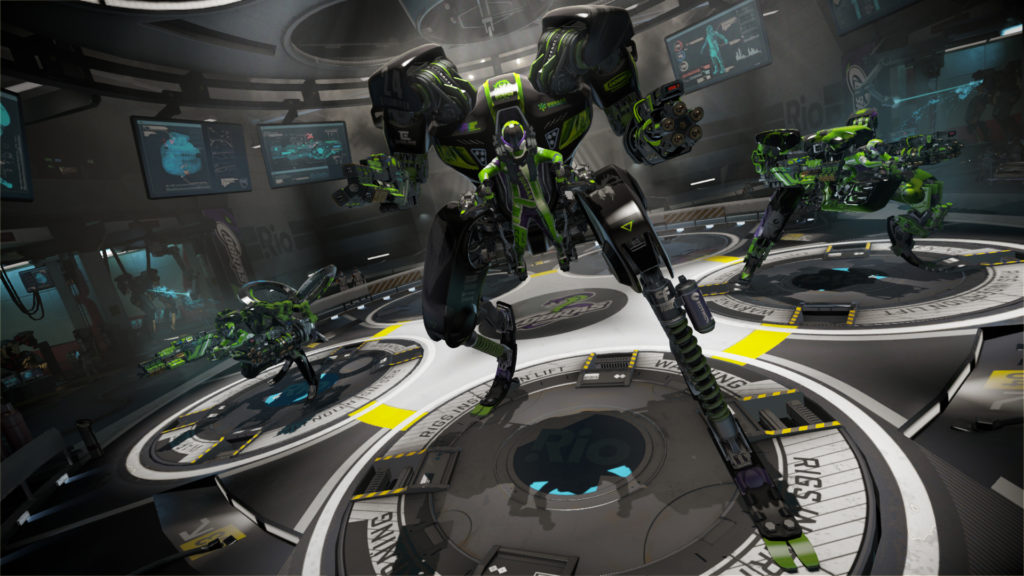While still in its infancy, virtual reality is changing the way gamers view interactive entertainment, and that extends to eSports. A recent Juniper Research study predicts that VR revenue distribution for gaming will reach $9 billion by the end of 2020. Resident Evil 7: Biohazard is the first AAA game playable entirely in VR and Capcom reports an impressive 9.4 percent of players are choosing to play this way (or at the very least, opted in to share this data). Resident Evil 7 may not be competitive, but it’s a good sign that so many fans are willing to invest in VR.
In a similar vein, developers are investing in VR to enhance eSports both in how they are played and how they are viewed by the audience. “Active spectating in VR experiences is something I believe we’ll see a lot of development in over the next few years,” Ray Davis, CEO and co-founder of Drifter Entertainment told [a]listdaily. “Right now, we primarily watch our favorite pros superimposed over a video capture of the game. While that can be compelling, it rarely shares that same feeling as being physically courtside at your favorite ball game. With VR spectating, there’s no reason you can’t be toe-to-toe in that same situation, and get an experience that exceeds what you’d be able to experience in reality. Beyond that, there are a lot of interesting opportunities to involve active VR spectators into the match as well, much like how services like Twitch are offering more and more ways for fans to engage with their favorite players.”
Bryan Chu, vice president of marketing for VREAL agrees. “I see a broadening of the ways people watch eSports [and] engage,” said Chu during the [a]list summit last week. “When you get inside the game [with VR], it blurs the lines between viewer and broadcaster. You get a much bigger sense of presence and you start getting that connection between the fans, the athletes and the stars.”
ESL One New York became the first eSports tournament streamed in virtual reality this past October, thanks to a partnership with Sliver.TV. The CS:GO tournament was viewable in 360 degrees with either VR or normal video viewing. If screaming from the seats is more your thing, fans can experience a virtual eSports stadium experience, as well, beginning at the Intel Extreme Masters (IEM) World Championship 2017 held on February 25 through 26 and March 3 through 5 in Katowice, Poland. While a premium experience is available for HTC Vive, Oculus Rift and Samsung Gear VR, anyone can check out the stream with Google Cardboard as an inexpensive alternative.
“At Newzoo we believe the biggest commercial potential for VR is on the spectator side,” Newzoo CEO, Peter Warman told [a]listdaily. “Watching an NBA game live from Jack Nicholson’s seat or walking around on the battlefield itself during a Dota 2 or CS:GO final are two examples. In that respect, eSports brings to VR what sports does. That appeals to a larger group of people than playing VR games itself.”
While there is an obvious market to bring spectators into eSports through virtual reality, what about the players, themselves? Developers are working on that, too. Chinese game company Hero Entertainment has entered a partnership with Virtuix, creator of the Omni motion platform—a full rig that allows players to run or walk in place in addition to the usual VR hand controls or looking around. Hero is bringing its popular shooter title, Crisis Action to virtual reality using the Omni to create a VR eSport in China. Hero also owns the largest mobile eSports league in China, the Hero Pro League, so that’s a great start.
Hero Entertainment is hoping to adapt an existing title into VR eSports, while other developers are building an experience from the ground up. Colopi NI CEO, Jikhan Jung believes that VR will eventually replace gaming on the PC. “This is why our strategy is to create VR games that are socially engaging.” The Japanese game developer recently released Cyberpong VR for the HTC Vive. “We think that VR is currently too isolated for a single player experience, which can be lonely. Having fun together is the most important part of good game design for VR, since the platform really lends itself to a social experience.”
Statements like these invoke visions of a team of players strapping themselves into VR and battling it out, Tron-style in a simulated arena. Meanwhile, spectators all over the world could virtually step right onto the game map, post on social media and interact with other fans all within a live broadcast. It may be a while before ideas like this become reality, but the wheels are already in motion so, we’ll just have to enjoy the ride.

